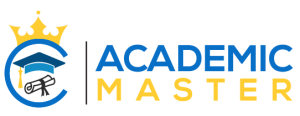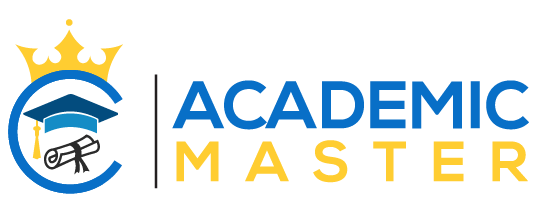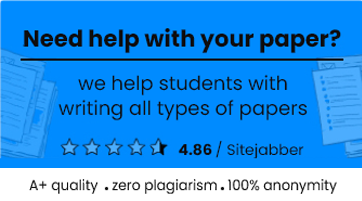Case study one:
TASK ONE (a)
The issue identified in Case-study one is that the parents are failing to fulfil the essentials of the relevant Case Plan Objectives. The organisation is currently instigated a strategy limiting the conveying of clienteles in office-automobiles. The organisation has an opinion that it is the responsibility of the parents to make all the system work and if they earnestly want to create a change in their lives, they will somehow find a manner to get to things done (Power, Bartlett & Hall, 2016).
The clients’ point of view is that have to use public transportation which is mainly limited for families living in remote areas. Services are usually office-based in city sites. Parents argue that it is difficult to access these amenities and consequently meet their case plan goals (Goad & Mascall, 2009).
The power structure defines the hierarchical structure of power within the organisation or the state. In the case, working with a manager is described, and somehow the administration of the city is also involved here. It seems like the manager is having a weak power in the organisation whereas the city’s administration is unable to provide suitable transport to remote areas. There are two issues identified in the case. The manager is not happy with the new policy and wants to act on it; it is an individual issue. Whereas the societal problem is the issue of parents and their difficulties in fulfilment of their Case Plan Goals (Kaschak, 1983).
TASK ONE (b)
Two parties are affected in the case. Firstly the parents regarding the fulfilment of the case requirements and secondly, the manager and organisation are concerned.
The organisation is positively affected by the case. The organisation has implemented a new policy with which they have restricted the usage of office transport for transporting clients. By applying this new policy, the organisation will save the transportation cost, depreciation cost, the repair and maintenance cost of vehicles, fueling price and other relevant expenses. They can further utilise the vehicles for official work only. So, the policy has an overall positive effect on the organisation (Moorman, 2009).
On the other hand, two parties are negatively affected by the new policy of the organisation namely the manager and the parents or the clients of the organisation. The manager is not at all satisfied with the recent plan of the organization which is restricting the usage of office transport for transporting clients, so he wants to act as he considers it unjust and unfair. The second party affected by the policy is the parents. They have already mentioned their issues of transportation, being located in remote areas it becomes difficult for them to cope up with the requirements of the Case Plan Goals.
TASK ONE (c)
Two common forms of oppression are identified here in the case study. One extreme persecution identified is the organisation’s new strategic policy which is restricting the use of official vehicles for client transportation which comes under the internalised form of oppression. The manager is being worried, and in a broader view, this is also morally ruthless to restrict the usage of vehicles for needy parents. Another dominant form of oppression found in the case is the insufficient availability of public transport which is suppressing the parents to meet their requirements regarding the case (“Advocacy, Support, and Rehabilitation Programs”, 2004).
To identify the sources of these oppressions, a detailed look at the official, religious and moral ideology is required. For the first instance, philosophical-ideology and administrative or political ideology is the source of oppression as the policy of the organisation is low on the moral and administrative grounds. The second issue of the scarcity of the availability of public transport in remote areas falls under the head of political or administrative ideology. As the provision of transportation to the general public in every place and especially to remote areas is solely the duty of the government and administration of that particular area.
TASK ONE (d)
This issue could be resolved on the political and administrative level in the state. The organisation could also play its part to help the clients by facilitating them by providing their official transport to the parents. The government can provide cheap and safe transportation system to remote areas so this way; it would help the parents greatly to get better access to the transportation system and hence they will be able to cope up with the problems in a better way leading them to meet the requirements of their Case Plan goals. Verdicts prepared on all the essential products, background, housing, commodities and services acquired to be made available for the kid’s harmless utilisation have got to be in the paramount wellbeing of the kid.
| Sr. No | ISSUE | SOLUTION |
| 1 | a new strategic policy which is restricting the use of official vehicles | organisation could also play its part to help the clients by facilitating them by providing their official transport to the parents |
| 2 | insufficient availability of public transport | The government can provide cheap and safe transportation system to remote areas so this way; it would help the parents greatly to get better access to the transportation system |
| 3 | Manager’s concern | Raising up of voice in the organisation and to the administration of city to get a better solution |
TASK ONE (e)
Government and the administration are always responsible for making the life of their citizen better by improving their standard of living. The solutions provided for the above-mentioned issues will result in an overall positive atmosphere all around. The primary problem is of the parent’s transportation system so if the Government or administration provides a suitable and comfortable transport system it will help the parents in following their case plan in a much better way, and they will then be able to fulfil the requirements at the appointed time. The solution will promptly help the parents who are in distress currently as their main issue is the transportation from remote areas.
By ranking the solutions proposed above, according to their impact on the social justice, the top recommended solution that leads to higher social justice is the provision of the transportation system in the remote areas. The next answer is regarding the management’s policy. It has a lesser impact as it will only affect those parents who are availing their case plan goals. So this will impact only the relevant parents and their families. The last solution regarding the manager will have the least impact as it is an individual act of one particular person and will, therefore, have its influence only within the organisation he is working in. The issue regarding the manager and his point regarding the policy is entirely valid. He doesn’t support the plan so he is required to raise his voice within the organisation as well as any right forum to get a better solution for the issue.
Task Two
-
Identify your
Allies/Resources
The local administration of the city and the particular organisation regarding the Child protection system can help in achieving our social justice outcome.
-
Tasks for Allies
The local administration of the city can help by providing a suitable and economical transportation system for remote areas to help the parents.
-
The Short-Term Outcome
The outcome of the assigned task will be that parents will be able to fulfil their requirements of the case plan goals efficiently and effectively.
-
The Long-Term Outcome
The goal for the individual client I am working with is to provide them assistance in the long run so that they could efficiently and consistently fulfil their requirements and address the issues with the child to make him a better citizen for the society.
The format for Task Two:
| Allies/Resources | Tasks | The Short-Term Goals | Long-term Goals | Ultimate Social Justice Related Outcome | |
| The local administration | Provision of the suitable and economical transportation system | Requirements of case plan goals will be met | Help the child to become a better citizen | A better individual of the society | |
| organisation of the Child protection system | Provision of office vehicles | Helping parents | Helping the child | Making the child a better citizen | |
Communique Email:
Dear Sir,
I am Mr. ABC working as a case manager in the Department of Child Safety. The reason which forced me to seek your help is that my department is working with parents involved with the child protection system, but they consistently do not meet the requirements of their Case Plan Goals, and the reason they mention behind it is that they don’t have a driver’s license and public transport is extremely limited, particularly for families living in rural and remote areas. Majority of the services are typically office based in central city locations, so it is difficult for the parents to access these services and therefore meet their case plan goals.
As the issue discussed above is serious, and I want you to assist the people living in the remote areas by providing local transportation system as soon as possible. As the parents are unable to fulfil the requirements of their cases, it is severely affecting their children, and in the long run, it is affecting our future generation.
I hope to get a positive response from your side soon. Thanks in anticipation.
Regards
MANAGER
Department Of Child Safety
References
Power, A., Bartlett, R., & Hall, E. (2016). Peer advocacy in a personalised landscape. Journal Of Intellectual Disabilities, 20(2), 183-193. http://dx.doi.org/10.1177/1744629516634561
Goad, D., & Mascall, B. (2009). Canada: advocacy and public support. Museum International, 44(4), 196-200. http://dx.doi.org/10.1111/j.1468-0033.1992.tb01064.x
Kaschak, E. (1983). In support of responsible advocacy: A reply to Hatch. American Psychologist, 38(8), 956-957. http://dx.doi.org/10.1037/0003-066x.38.8.956
Moorman, J. (2009). Advocacy Today, Advocacy Tomorrow, Advocacy Forever!. Virginia Libraries, 55(4). http://dx.doi.org/10.21061/valib.v55i4.1091
Advocacy, Support, and Rehabilitation Programs. (2004). American Annals Of The Deaf, 149(2), 213-246. http://dx.doi.org/10.1353/aad.2004.0018





